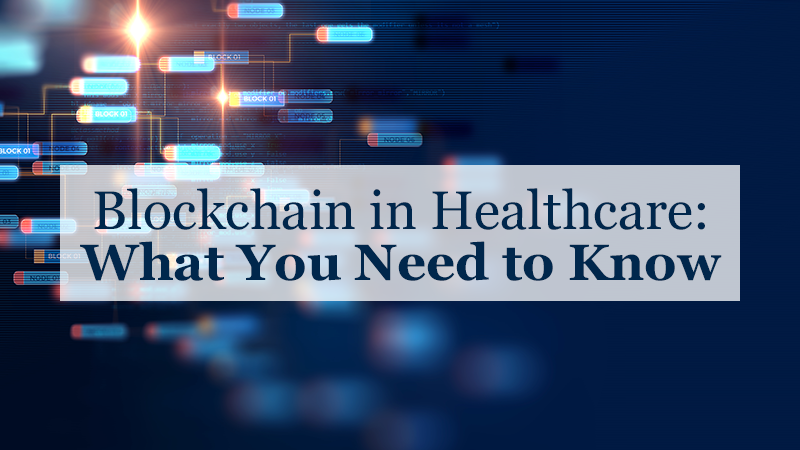Blockchain in Healthcare What You Need to Know
A few simple facts about blockchain tell the story of why 88 percent of healthcare providers consider it a viable solution. Some have already begun using the technology. Its decentralized nature protects patient data better while still being able to open records to all who need access. Here’s what it offers in relationship to medical records, prescription disbursement, drug traceability and patient billing.
Medical/Patient Records (Individual and Population)
Blockchain provides a better source for storage and access to electronic health records (EHRs). It allows secure, simplified sharing of data between sources, providing for a lifetime of data accessible to doctors in seconds. It also provides patients more control over what gets shared. With patient permission, it can incorporate information from hospital and outpatient visits, wearable device data, physical therapy sessions and much more.
Though decentralized data, hence the block, it also provides a chain of events, each stored on its own server. The technology connects the data, allowing a doctor to see a patient’s entire medical history in moments, for example, in an emergency room, in a read-only mode. The doctor can only add to the patient record by creating their own block of data. By using a system that stores blocks of data on various servers, patient data remains more secure since it lacks a single access point.
Blockchain also benefits medical research. It allows patients to easily determine whether to share data. It also lets them limit the sharing to specific blocks or the total record. The technology, combined with ancillary programs, such as Bitmark, lets researchers better communicate precisely which data they request and how they will use it. University of California Berkeley School of Public Health currently uses Bitmark for this purpose.

Prescription Disbursement
When a doctor writes a patient prescription, it enters the blockchain of that patient’s records. The doctor also accesses existing prescriptions and wearable device data that tracks the patient’s exercise and nutrition. They can catch a potential drug interaction before the patient fills the prescription.
At the pharmacy, the pharmacist sees that the new prescription combined with another the patient currently takes will increase dehydration. Although it is not a standard side effect of the drug alone, the pharmacist knows to add to the data sheet that accompanies the prescription and mentions it when he hands off the prescription. The two blocks of data coupled with the pharmacist’s knowledge work together to keep patients healthier.
Drug Traceability
Another area blockchain helps healthcare is drug traceability. Of course, anonymous data sharing helps with drug development. Results of a patient’s reaction to existing drugs can help improve them. The other related area it aids currently costs the pharmaceutical industry $200 billion annually. Blockchain can help trace authentic drugs, taking less effective impostors off the market. Ensuring patients get the actual drug prescribed at the full dose also improves patient health.
Claims and Billing
Blockchain provides a less expensive, more secure method of billing. It can seamlessly integrate with claims adjudication software and speed Medicare and Medicaid claims by instantly accessing needed aggregated data for the submissions. This is a benefit to insurance providers, doctors, and patients as it prevents fraudulent claims while reducing approval time.
The implications of blockchain technology reach each area of healthcare. It has potential to positively impact patient health, medical research, and medical billing. Case studies grow in number as forward-thinking institutions like UC implement it.
Call us at Starr & Associates to learn how blockchain can help you.
